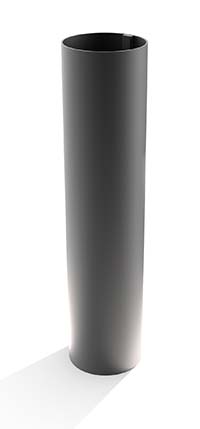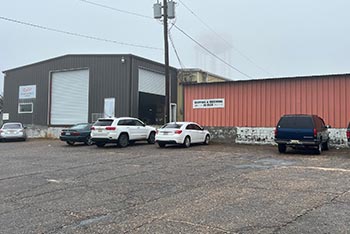The custom roll forming process has long been recognized as an efficient and cost-effective solution for the manufacture of complex parts and components in various industries. However, some misconceptions surrounding the process often prevent manufacturers from fully understanding and leveraging the benefits of this powerful technology. In this article, we aim to debunk some of the most persistent myths about custom roll forming and provide accurate information, enabling you to better appreciate how this service can revolutionize your production processes.
Manufacturers using custom roll forming benefit from reduced lead times, optimized material usage, and enhanced design flexibility. Despite these advantages, misconceptions about the process continue to persist, often limiting its potential adoption across various manufacturing sectors.
Let’s explore and debunk several prevalent myths about custom roll forming, such as the belief that it is only suitable for limited applications or that it cannot accommodate complex designs. By providing facts and insights designed to challenge these misconceptions, manufacturers will be better positioned to make informed decisions about their roll forming needs and, ultimately, benefit from the efficiency, versatility, and value the custom roll forming process offers.
Myth #1 – Custom Roll Forming is Only Suitable for Limited Applications
One common misconception about custom roll forming is that it only caters to a narrow range of applications. In reality, this versatile manufacturing process can handle a wide variety of parts and components across numerous industries, such as automotive, construction, transportation, and renewable energy, among others.
Custom roll forming can accommodate different materials, including steel, aluminum, and stainless steel, which enables manufacturers to address various application requirements. The adaptability of this process ensures that it can comply with industry-specific needs and cater to a diverse array of projects, from producing thin-walled components for electronics to creating robust structural elements for heavy machinery.
Myth #2 – Custom Roll Forming Cannot Support Complex Designs
Another false idea about custom roll forming is that it is incapable of handling intricate part designs. This belief may stem from outdated impressions of roll forming as a technology reserved for producing simple shapes like basic channels and angle profiles. However, advances in roll forming technology have revolutionized this manufacturing process, allowing for the creation of increasingly complex and intricate parts.
Today, custom roll formers can execute intricate bends, embossing, notching, and even part assembly through the use of innovative techniques and advanced tooling. Computer-aided design (CAD) software and computer numerical control (CNC) technology enable manufacturers to create highly detailed parts with tight tolerances, resulting in exceptional functional and aesthetic quality.
Myth #3 – Custom Roll Forming is Inherently Expensive
Many manufacturers mistakenly assume that custom roll forming is an expensive option for producing parts. This misconception may arise from the fact that creating custom tooling and dies for a roll forming project can present an upfront investment. However, the overall cost savings offered by custom roll forming can more than offset these initial costs. Roller Die + Forming also has a library of standard tooling that we use to help cut or eliminate the up front tooling costs for many projects.
Custom roll forming is well-suited for high-volume projects, as the efficiency of the process can result in significant economies of scale. The continuous operation of roll forming lines, minimal material waste, and reduced labor requirements make this manufacturing method highly cost-effective when compared to alternatives such as stamping or extrusion.
Moreover, the ability to produce parts with tighter tolerances means that custom roll forming often results in higher-quality components with fewer defects. This superior quality not only lowers the overall cost of production by reducing scrap rates and rework, but it can also translate into a stronger brand reputation and customer satisfaction.
Myth #4 – Custom Roll Forming is an Outdated Manufacturing Process
Some people may regard custom roll forming as an aging or obsolete manufacturing process that is being replaced by newer technologies. However, this notion is far from the truth. Custom roll forming remains a highly relevant and in-demand manufacturing solution due to continuous advancements and improvements in the technology.
Equipment manufacturers and industry leaders are consistently investing in research and development to refine the roll forming process, making it more efficient, precise, and versatile than ever before. The advent of advanced computer systems, better materials, and innovative tooling technologies are just a few examples of how the industry has evolved to meet the ever-increasing demands of modern manufacturing.
Custom roll forming has also adapted to the digital age, utilizing data-driven approaches and machine learning to optimize production efficiency and reduce downtime. By embracing innovation and continually striving for improvement, custom roll forming has secured its place as an essential manufacturing solution for industries across the globe.
Myth #5 – The Roll Forming Process is Inflexible and Difficult to Modify
Another prevalent misconception is that custom roll forming is inflexible and not easily adaptable to design changes or adjustments. This belief is a misconception because modern custom roll forming machines and tooling are highly flexible and can be modified to meet evolving production requirements.
Contemporary roll formers are designed with adjustable machine settings and interchangeable tooling that can adapt to varying part configurations, making them versatile for handling different design requirements. Custom roll tooling can be designed with modularity in mind, allowing for easy adjustments and updates as needed to accommodate modifications in part design or material requirements.
Myth #6 – Custom Roll Forming is Exclusively Fit for Long, Straight Parts
Many people associate custom roll forming only with the production of linear, straight components, such as channels, angles, and U-shapes. However, custom roll forming offers a much more extensive range of capabilities than simply fabricating straight parts.
By leveraging the possibilities that custom roll forming has to offer, manufacturers can optimize their production processes and benefit from the inherent flexibility and adaptability of this advanced manufacturing technology.
Myth #7 – Custom Roll Forming Quality Control is Challenging to Implement and Maintain
Some might think that ensuring high-quality standards and efficient quality control in custom roll forming is difficult due to its continuous and automated nature. However, the implementation of quality control systems makes it possible to maintain strict quality control parameters throughout the entire roll forming process.
These systems enable manufacturers to monitor critical part dimensions, material properties, and production parameters during the forming process, ensuring that all output components meet the required tolerances and specifications. This proactive approach to quality control minimizes defects and promotes overall efficiency, which translates into reduced production costs and enhanced customer satisfaction.
Moreover, well-established custom roll formers are dedicated to continuous improvement, regularly running statistical process control (SPC) analyses, and conducting corrective action reports (CARs) to further optimize their processes and maintain consistently high-quality standards.
Myth #8 – Custom Roll Forming Generates Excessive Waste and Contributes to Environmental Pollution
Some manufacturers might hold the perception that custom roll forming is a wasteful and environmentally unfriendly manufacturing process. However, the truth is that custom roll forming is, in fact, one of the most efficient and sustainable manufacturing processes available.
The roll forming process minimizes material waste by closely matching the component’s final dimensions during the initial roll formation, resulting in a highly efficient use of raw materials. This material optimization not only reduces costs but also lowers the environmental impact associated with metal waste.
The energy efficiency of the custom roll forming process is another significant contributing factor to its environmental sustainability. The lower energy consumption compared to alternative manufacturing methods, such as stamping or extrusion, ensures that custom roll forming maintains a smaller carbon footprint.
Myth #9 – Custom Roll Formed Products are Inferior to Stamped or Extruded Parts
Some manufacturers may be inclined to think that custom roll-formed products are of lower quality or have limited application scope compared to components produced through other methods, such as stamping or extrusion. However, this misconception fails to recognize the unique benefits and advantages that custom roll forming offers.
Custom roll-formed components benefit from improved dimensional stability and reduced warpage due to the gradual forming process, resulting in high-quality products with tight tolerances. Furthermore, custom roll forming allows for the consistent production of complex shapes with minimal stress on the material, ensuring excellent structural integrity and durability.
Another critical factor that sets custom roll-formed products apart is the ability to incorporate various value-added features, such as holes, notches, or embossing inline during the manufacturing process. These additional elements can enhance the functionality, performance, or aesthetics of the components, expanding their range of applications and competitiveness in various industries.
By understanding the unique properties and benefits of custom roll-formed products, manufacturers can confidently choose custom roll forming as a reliable and effective solution for their component needs.
Myth #10 – Merging Additional Processes with Custom Roll Forming is Impossible
A widespread misconception is that custom roll forming is limited to a standalone process, and incorporating other manufacturing techniques or finishing processes is difficult or impossible. However, modern roll forming equipment is designed to support the seamless integration of various secondary operations and finishing procedures.
Examples of secondary operations that can be incorporated within the custom roll forming process include hole-punching, notching, spot welding, embossing, and shearing. Integrating these operations during the roll forming process streamlines production, enhances efficiency, and reduces potential bottlenecks.
Moreover, custom roll forming can support a wide range of finishing processes, such as painting, powder coating, anodizing, and various plating methods, crucial for corrosion resistance, improved aesthetics, or meeting specific industry requirements.
By accommodating additional processes within the custom roll forming workflow, manufacturers can optimize their production process, reduce lead times, and deliver high-quality finished products at a competitive price.
Myth #11 – Tooling for Custom Roll Forming has a Short Lifespan
Some manufacturers might mistakenly assume that tooling and dies used in custom roll forming are prone to wear and must be frequently replaced, incurring significant costs and causing production delays. While tooling for any manufacturing process has a natural lifespan, advancements in materials, design, maintenance, and technology have significantly improved the durability and longevity of custom roll forming tooling.
Today’s roll forming tools are engineered from robust, high-quality materials specifically designed for extended service life. Proper heat treatment and coatings further enhance the tooling’s wear resistance and reliability.
The longevity of custom roll forming tooling is not solely dependent on the materials; proper maintenance schedules and proactive monitoring of tool wear are critical to ensuring a long and productive life of the tooling. By engaging with experienced roll forming partners and investing in quality tooling, manufacturers can minimize tool replacement costs and downtime associated with worn tooling.
Myth #12 – It’s Difficult to Find Reliable Custom Roll Forming Partners
Some manufacturers might think it is difficult to identify and engage with dependable custom roll forming service providers. However, there are numerous reputable companies specializing in custom roll forming services, each with a solid track record of providing high-quality products and exceptional customer support.
Reliable custom roll forming partners can be identified by considering factors such as industry experience, reputation, financial strength, client testimonials, and certifications. In addition, manufacturers should request case studies, samples, or portfolio documents to assess the roll forming partner’s capabilities and capacities for specific application requirements.
Another crucial aspect is communication and collaboration; selecting a roll forming partner with transparent processes, open communication, and a commitment to collaboration can significantly boost a project’s success, ensuring satisfaction for both parties involved in the manufacturing process.
By conducting thorough research and engaging in open dialogues, manufacturers can find dependable custom roll forming partners to form long-term, mutually beneficial relationships.
Myth #13 – Custom Roll Forming is Incompatible with Lean Manufacturing Principles
Some manufacturers might assume that custom roll forming does not align with lean manufacturing principles – an approach that emphasizes value-add activities, waste reduction, and continuous improvement in production processes. However, custom roll forming, when approached thoughtfully and strategically, can be an integral part of a lean manufacturing system.
As discussed throughout this article, custom roll forming offers numerous advantages that align well with lean principles such as waste reduction, flexibility, operational efficiency, and quality control. By optimizing the custom roll forming process and integrating it with other lean manufacturing techniques, organizations can achieve streamlined workflows, minimization of resource consumption, and ultimately deliver greater value to their customers.
Custom roll forming is an invaluable manufacturing process that offers significant benefits to a wide spectrum of industries and applications. By dispelling the myths surrounding this versatile technology, manufacturers can better understand and harness its unique capabilities to optimize production efficiency, reduce costs, ensure quality, and ultimately gain a competitive edge in their market sector.
With over 60 years of experience, Roller Die + Forming is a leading custom roll forming service provider dedicated to delivering innovative solutions and exceptional customer experience. Our team of skilled engineers, designers, and production experts is committed to helping clients navigate the complexities of custom roll forming, ensuring that they receive the highest quality products built to their specifications.
With state-of-the-art equipment, extensive material expertise, and unparalleled industry knowledge, Roller Die + Forming is your ideal partner for all your custom roll forming needs. Let us help you unlock the true potential of custom roll forming and take your manufacturing processes to the next level.












